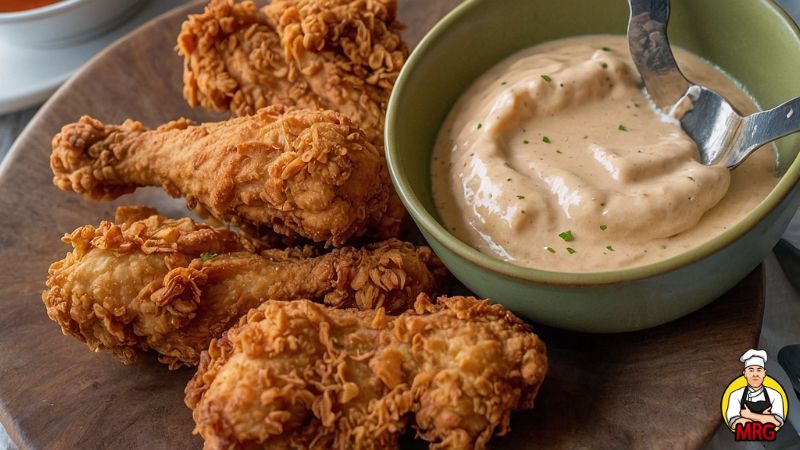When it comes to creating a flavorful and healthy alternative to traditional sausages, this chicken sausage recipe stands out as a favorite in my kitchen. The rich taste, combined with the tangy flavor that comes from carefully selected seasonings, makes it a versatile dish suitable for any meal. Whether you’re serving breakfast, lunch, or dinner, homemade chicken sausage adds a delicious protein-packed option to your menu. Plus, it’s perfect for those seeking a healthier alternative to pork sausages, without sacrificing taste.
This recipe works well for family meals, weekend brunches, or even as a snack during busy days. Now, let’s explore how to pick the best ingredients and ensure your chicken sausage recipe turns out just right.
How to Choose the Right Main Ingredient for Chicken Sausage
The key to a successful chicken sausage recipe is, of course, the chicken itself. When choosing the right chicken, opt for fresh, high-quality meat that you trust. Look for chicken breasts or thighs, depending on whether you prefer a leaner or juicier sausage.
For a healthier option, skinless chicken breasts are perfect. However, if you’re after a more flavorful and moist sausage, thighs with a modest amount of fat are ideal. The fat content contributes to the juiciness of the sausage, ensuring it doesn’t dry out during cooking.
You can find good quality chicken in your local grocery store, but sourcing fresh, organic chicken from a local farm or butcher is always a great option for superior taste and texture. Whether you choose chicken breasts or thighs, the result will be a delicious homemade sausage that rivals any commercially made version.
Seasoning: The Secret to Great Flavor
Seasoning is what sets apart a good-tasting chicken sausage from a bland one. Since chicken is milder in flavor compared to pork, it’s essential to add the right spices and herbs to enhance its taste. Garlic and onion are the backbone of many sausage recipes, adding sweetness and depth to the flavor profile.
For this chicken sausage recipe, I recommend including powdered buttermilk or Fermento, which gives the sausage a slight tangy taste and adds to the flavor enhancements. Fermento is often used in sausage making to create a fermented flavor without the lengthy process. This gives your homemade sausage that unique flavor you’d expect from gourmet, artisanal sausages.
Other seasonings to consider are clove, which adds a subtle warmth, and black pepper, for a bit of heat. You can also experiment with additional spices like paprika, thyme, and sage to develop a more complex flavor profile. A well-balanced blend of spices will ensure your sausage tastes better than any store-bought version.
Cooking Equipment: How to Use Equipment Effectively
When it comes to making homemade chicken sausage, having the right equipment can make all the difference. At a minimum, you’ll need a meat grinder, sausage stuffer, and a few basic kitchen tools.
- Meat Grinder: A meat grinder is essential for grinding chicken to the perfect consistency for sausages. Whether you’re using chicken breasts or thighs, grinding the meat yourself ensures freshness. Make sure to use a coarse grind for a more rustic texture or a finer grind if you prefer smoother sausages. Clean the grinder thoroughly before and after use to avoid cross-contamination.
- Sausage Stuffer: This tool is used to stuff the ground chicken and spices into casings. If you’re new to sausage making, a manual sausage stuffer can be an affordable and effective option. The key to using this equipment is to work slowly, ensuring that the sausage mixture is packed tightly but not overstuffed, which could cause the casing to burst during cooking.
- Casings: Natural casings are preferred for a more traditional and flavorful sausage. Before using the casings, rinse them in warm water and let them soak for about 30 minutes. This softens them and makes them easier to work with.
- Thermometer: When cooking sausage, it’s important to check the internal temperature. The safe internal temperature for chicken sausage is 165°F. Using a meat thermometer ensures that the sausages are cooked through without overcooking, which can dry them out.
Having the right equipment and knowing how to use it effectively will result in better-tasting sausages and make the process much easier.
Comprehensive Chicken Sausage Recipe
Homemade Chicken Sausage

Chicken sausage recipe is one of my go-to meals for a healthy, flavorful alternative to traditional pork sausage. The combination of fresh chicken, aromatic spices, and the option to control ingredients makes it both delicious and nutritious. Perfect for any meal, it's a simple, homemade dish that never disappoints.
Ingredients
- 1.5 pounds of fresh chicken breasts or thighs, ground
- 1/4 cup of powdered buttermilk (or Fermento for tangy flavor)
- 2 garlic cloves, minced
- 1 small onion, finely chopped
- 1/2 teaspoon of salt
- 1/4 teaspoon of black pepper
- 1/2 teaspoon of paprika
- 1/4 teaspoon of ground clove
- 1 tablespoon of fresh thyme (or 1 teaspoon dried thyme)
- Natural sausage casings (optional)
- 2 tablespoons of pork fat (optional, for juicier sausages)
Instructions
- Prepare the Chicken: Start by grinding the fresh chicken using a meat grinder. If you prefer a leaner sausage, use chicken breasts; for more moisture and flavor, opt for thighs. If you have pre-ground chicken, skip this step.
- Season the Mixture: In a large mixing bowl, combine the ground chicken, powdered buttermilk (or Fermento), minced garlic, chopped onion, salt, black pepper, paprika, ground clove, and thyme. Mix thoroughly until all ingredients are evenly distributed.
- Optional Addition of Pork Fat: If you desire juicier sausages, add 2 tablespoons of pork fat to the mixture. This step can be skipped if you prefer a leaner sausage.
- Chill the Mixture: Cover the bowl with plastic wrap and let the mixture chill in the refrigerator for about 30 minutes. This helps the flavors to meld and makes the mixture easier to handle.
- Stuff the Sausages: If you’re using sausage casings, prepare them by soaking in warm water for 30 minutes. Then, using a sausage stuffer, carefully fill the casings with the chicken sausage mixture. Be mindful not to overfill the casings to avoid bursting during cooking.
- Cooking the Sausages: You can either grill, pan-fry, or bake the sausages. If grilling, preheat the grill to medium heat. For pan-frying, heat a skillet over medium heat and cook the sausages for about 10-12 minutes, turning occasionally, until they are browned on all sides and have reached an internal temperature of 165°F. If baking, preheat the oven to 375°F and bake the sausages for 15-20 minutes, or until cooked through.
- Rest and Serve: Once cooked, let the sausages rest for a few minutes before serving to allow the juices to redistribute.
Nutrition Information:
Yield:
6Serving Size:
1Amount Per Serving: Calories: 150Total Fat: 5gSodium: 320mgCarbohydrates: 2gProtein: 24g
Serving Suggestions:
Homemade chicken sausage pairs wonderfully with a variety of side dishes. For a balanced meal, serve the sausages with roasted vegetables, a fresh green salad, or mashed potatoes. For a breakfast option, serve with scrambled eggs and toast. The versatility of this dish means you can enjoy it for any meal of the day!
Cooking Tips and Common Mistakes to Avoid
Tips:
- Add Moisture: Chicken can dry out more easily than pork, so including a modest amount of fat, such as pork fat or olive oil, can help retain moisture.
- Chill the Mixture: Don’t skip the chilling step, as it helps the sausage mixture firm up and makes it easier to work with.
- Use Fresh Spices: For the best flavor, use fresh garlic, herbs, and spices whenever possible. Fresh ingredients elevate the flavor profile and enhance the overall taste.
Common Mistakes to Avoid:
- Overstuffing the Casings: If using sausage casings, be careful not to overstuff them. Overfilling can cause the sausages to burst during cooking.
- Skipping the Meat Thermometer: Always use a meat thermometer to ensure the sausages are cooked to a safe internal temperature of 165°F. Undercooked sausages can pose a health risk, while overcooked sausages may be dry.
- Not Seasoning Enough: Chicken is a milder meat, so don’t be shy with seasoning. Proper seasoning is essential for creating a flavorful sausage.
Conclusion: A Delicious, Healthy Alternative
This chicken sausage recipe is not only easy to make but also provides a healthier alternative to traditional pork sausages. Whether you’re preparing breakfast, lunch, or dinner, these sausages are sure to be a hit. With the right seasoning, fresh ingredients, and proper cooking techniques, you can create sausages that rival any store-bought variety. Plus, by making them at home, you control the ingredients, ensuring a fresh and nutritious meal for your family.
Next time you’re craving something savory and satisfying, give this chicken sausage recipe a try. You’ll appreciate the flavorful, homemade touch that elevates this simple dish to something special. Enjoy the process of sausage making and feel free to experiment with different herbs and spices to create your own unique flavor combinations. Your homemade chicken sausage will surely become a household favorite!
Related Article:
I’m Calvin Lamb, an LA-based culinary enthusiast with a decade’s experience in five-star kitchens. My innovative dishes, inspired by seasonal flavors and sustainable practices, blend classic and modern cuisine. Besides crafting unique culinary experiences, I relish exploring new eateries and devising fresh recipes.




F*ckin’ amazing issues here. I’m very happy to look your article. Thanks so much and i am looking ahead to contact you. Will you please drop me a e-mail?